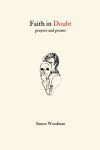First there was literary criticism. Then there was new literary criticism. And now, just when you thought that this product couldn’t get any better, we are proud to introduce the new improved literary criticism. Eight out of ten scholars said they preferred it.
Academics have taken modern advances in Biblically applied literary theory to the absolute limits. What began with SOURCE CRITICISM has reached its ultimate fulfilment in SAUCY CRITICISM.
Feminist criticism made texts applicable to those with a concern for feminist issues. Materialist criticism was for those concerned with economics and power politics. Saucy criticism succeeds where all previous attempts have failed, and makes texts relevant for students everywhere.
There has been much debate about the precise nature of saucy criticism - whether it can be regarded as “synchronic” or “diachronic”. One of its leading proponents said that it was probably best described as being just plain “chronic”.
The stated aim of saucy criticism is to pay attention to literary devices and phenomena in the text which have previously escaped scholarly recognition (but which have been sniggered at by observant students during boring sermons for years). Innuendo, double entendre, and a dirty mind are the stock-in-trade of saucy critics.
Thus it is that new light is shed upon Adam’s true reaction to waking up and meeting the naked Eve for the first time (Gen 2:23).
Many places exist in the Bible and liturgical resources such as hymn books where the application of saucy critical method can make the text more accessible, more relevant, and certainly more amusing.
However - since the basis of the new improved literary criticism is the individual student’s reaction to the text, further examples will be omitted and left to your fertile (!) imaginations.













No comments:
Post a Comment